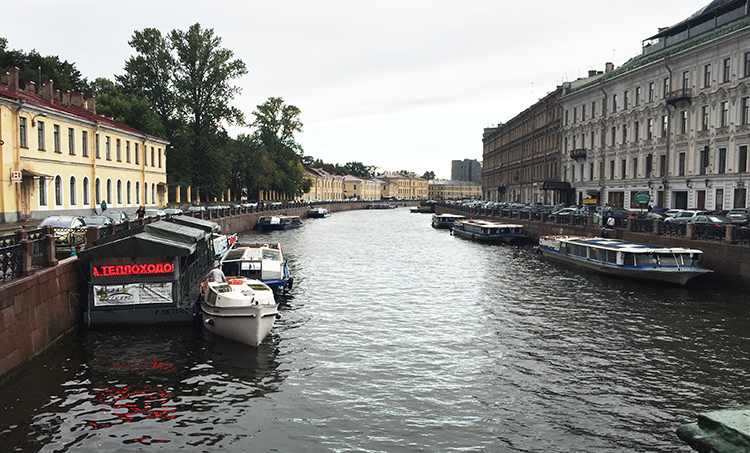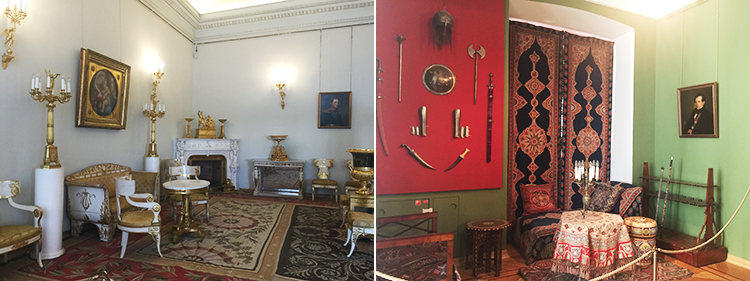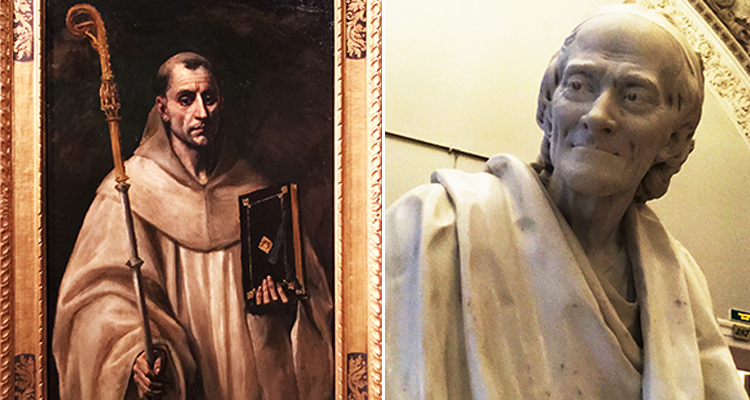
Written by: Dr. Dushka H. Saiyid
Posted on: January 15, 2016 | 
The Jordan Staircase, the Hermitage
Onion shaped cupolas of Greek Orthodox churches glint under the sun and dot the skyline of Moscow and St Petersburg, a reminder of the Byzantine influence.
The Romanovs established their rule by defeating the Tartars, and by early 17th century, their empire stretched from the Baltic in the north to Crimea in the south, Pacific in the east, and eating into Poland in the west. But by early by 20th century, the political system of this enormous land-based Russian empire had ossified, its demise hastened by participation in the 1st World War. Lenin was waiting in the wings to supplant the autocratic Tsarist system by one inspired by the Marxist vision of a more just society. Less than five years after the Russian Revolution of 1917, Lenin was struck down by a stroke, and Stalin adroitly filled the vacuum. It was Stalin’s visor like grip on power for three decades that shaped Russia into a warped version of a socialist state.

The Kremlin houses a number of Greek Orthodox churches; built mostly in the fifteenth and sixteenth century. It also has a number of museums, but the most interesting of these is the Armoury, which has a remarkable collection of the jewel-encrusted robes of the bishops of the church and the royal family. A collection of presents sent by the courts of Persia, the Ottomans, and Europe; saddles and swords covered in precious stones, the likes of which would be difficult to find in any other museum.
If Moscow has the Kremlin and the Bolshoi theatre, whose ballets and opera have revived their traditional excellence, St Petersburg is a beautiful city of canals, whose historic center has been declared a UNESCO World Heritage Site. The State Hermitage Museum is housed in the Winter Palace on the banks of river Neva, the residence of the Tsars since the middle of the 18th century. It outshines all museums. by the splendor of its architecture and the richness of its collection of art, artifacts and a display of the living quarters of the Tsar. Separate tickets have to be bought to see the diamond and gold collections, but even the rest of the palace is dazzling in its array of exhibits, and requires at least a couple of days to see it. Its collections range from the culture of the Golden Horde, Caucasus, the Middle East, Scythian, the State and Private Rooms of the Romanovs and Italian art from the 16th -18th century, amongst others.
The Jordan staircase, graceful and grand, was from where the guest entered into the Nevsky Suite of Rooms, including the Malachite Room with exquisite use of malachite pillars, an enormous malachite vase and mantelpiece. The Raphael Loggias is a spectacular vaulted gallery that Catherine the Great ordered to be re-created as a copy of the original designed by Raphael for the Vatican Palace. The State Rooms include St George’s Hall or the throne room, the Library of Nicholas II, drawing and smoking rooms, provide a glimpse of into the luxurious but elegant lifestyle of the Tsars.

The diamond and gold rooms can only be visited with guides, and cameras are strictly prohibited, unlike in the rest of the museum. It is one of the best jewelry collections in the world. These priceless items belonged to the Romanovs, some of them gifts from monarchs of other countries. Faberge’s fine crafted jewelry and eggs are on display, as he was the jeweler to the Russian court from the middle of the 19th century.
The art collection has a wide range, but particularly striking is a life-sized sculpture of sharp-eyed Voltaire by Jean Antoine Houdon, and the magnificent Crouching Boy by Michelangelo. Standing inches away from such masterpieces with no bar on taking photographs was a rare privilege. The Italian collection has masterpieces by El Greco, Titian, and Leonardo da Vinci’s Madonna Litta is constantly surrounded by crowds of visitors.

Russia’s museums, and the Hermitage in particular, provide a glimpse into its rich cultural heritage, and the might and wealth of the Tsars. Its Soviet phase must be seen as an attempt at renewal of a state and society that was in rapid decline.
Click to view picture gallery
You may also like: